Best Cognac Brands: Top Picks for a Delicious and Sophisticated Sip

If you’re a fan of fine spirits, then you know that there’s nothing quite like a good cognac. This luxurious French brandy is renowned for its rich, complex flavours and smooth, velvety texture.
Whether you’re sipping it neat or using it as a base for a cocktail, cognac is a drink that always delivers. In this article, we’ll take a closer look at some of the best cognac brands on the market, so you can find the perfect bottle for your tastes.
Understanding Cognac can be a bit tricky, as there are many different styles and classifications to consider. However, once you get the hang of it, you’ll be able to appreciate the subtle nuances and unique characteristics that make this drink so special.
From the Cognac Region in France to the art of blending, we’ll cover everything you need to know to become a true cognac connoisseur.
So, whether you’re a seasoned cognac drinker or just starting to explore the world of fine spirits, this article is for you. Read on to discover some of the top cognac brands available today and learn how to taste and appreciate this delicious drink like a pro.
Key Takeaways
- Cognac is a luxurious French brandy known for its rich, complex flavours and smooth texture.
- Understanding the different styles and classifications of cognac is key to appreciating its unique characteristics.
- By exploring the top cognac brands on the market and learning how to taste and appreciate this drink, you can become a true cognac connoisseur.
Understanding Cognac

If you are a fan of fine spirits, then you must have heard of Cognac. This French brandy is known for its rich, complex flavour and is enjoyed by connoisseurs all over the world. In this section, we will take a closer look at Cognac, exploring its history, production process, and grading system.
What is Cognac?
Cognac is a type of brandy that is produced in the Cognac region of France. It is made from Ugni Blanc grapes, which are known for their high acidity and low sugar content.
The grapes are harvested, pressed, and then fermented to produce a wine that is low in alcohol and high in acidity.
After fermentation, the wine is distilled twice in copper pot stills. The resulting spirit is then aged in oak barrels for a minimum of two years. The longer the Cognac is aged, the more complex and rich its flavour becomes.
Cognac VS Brandy
While Cognac is a type of brandy, not all brandies are Cognac. To be classified as Cognac, the brandy must meet strict production requirements, including being distilled in the Cognac region of France and aged for a minimum of two years.
Brandy, on the other hand, can be produced anywhere in the world and can be made from a variety of grapes. It is typically aged for a shorter period than Cognac and has a lighter, fruitier flavour.
The Grapes of Cognac
As mentioned earlier, Cognac is made from Ugni Blanc grapes, which are also known as Trebbiano in Italy. These grapes are known for their high acidity and low sugar content, which makes them ideal for distillation.
Other grape varieties, such as Folle Blanche and Colombard, were also used in the production of Cognac in the past, but they are now used less frequently.
The Distillation Process
The distillation process is a crucial step in the production of Cognac. The wine is distilled twice in copper pot stills, which gives the spirit its distinctive flavour and aroma.
During the first distillation, the wine is heated to produce a low-alcohol spirit called brouillis. The brouillis is then distilled a second time to produce the final spirit, which is known as eau-de-vie.
Cognac’s Grading System
Cognac is graded based on its age and quality. The grading system includes VS (Very Special), VSOP (Very Superior Old Pale), and XO (Extra Old).
VS Cognac is aged for a minimum of two years, while VSOP is aged for a minimum of four years. XO Cognac is aged for a minimum of ten years and is considered the finest and most complex of the three.
In conclusion, Cognac is a type of brandy that is produced in the Cognac region of France. It is made from Ugni Blanc grapes, distilled twice in copper pot stills, and aged in oak barrels for a minimum of two years.
Cognac is graded based on its age and quality, with XO being the most complex and finest of the three.
The Cognac Region
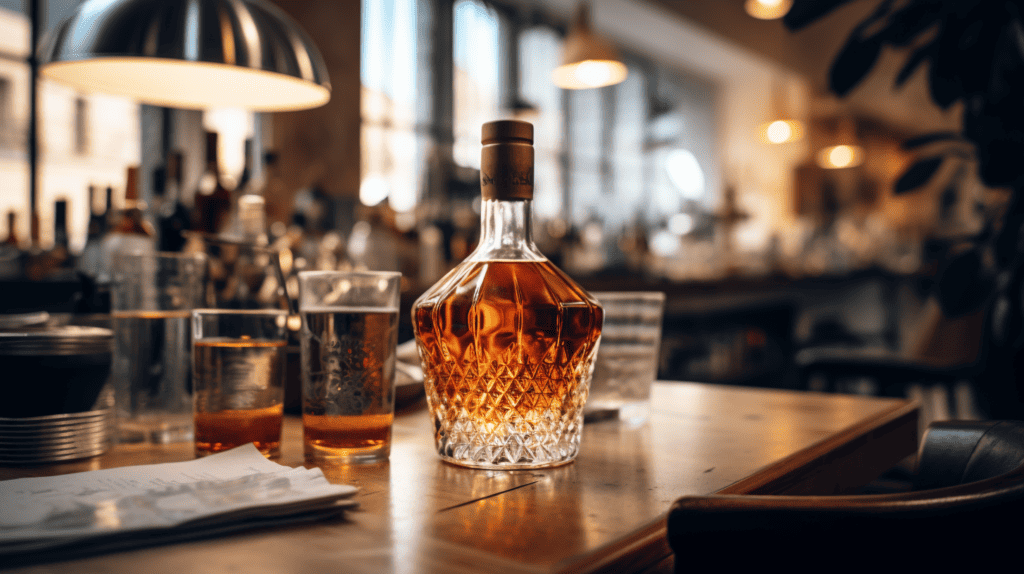
If you’re interested in cognac, you’ve probably heard of the Cognac region. It’s a region in France that’s famous for producing some of the best cognacs in the world.
The Cognac region is located in the southwest of France, and it’s divided into six different growing regions. In this section, we’ll focus on the four most important regions: Grande Champagne, Petite Champagne, Borderies, and Fins Bois.
Grande Champagne
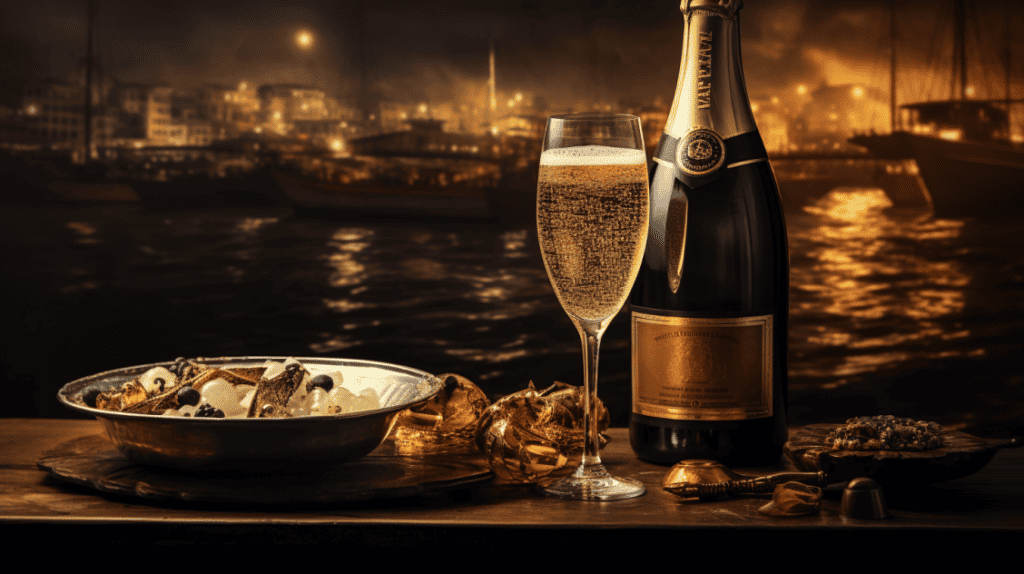
Grande Champagne is the most prestigious growing region in the Cognac region. It’s known for producing cognacs that are elegant, floral, and complex.
The soil in Grande Champagne is very chalky, which helps to produce grapes with high acidity and low alcohol content. This is ideal for producing cognacs that are light and delicate. If you’re looking for a high-quality cognac, look for one that’s made from grapes grown in Grande Champagne.
Petite Champagne

Petite Champagne is the second most important growing region in the Cognac region. It’s located just south of Grande Champagne, and it’s known for producing cognacs that are similar in style to those from Grande Champagne.
The soil in Petite Champagne is also chalky, which gives the grapes grown here a similar character to those grown in Grande Champagne. If you can’t find a cognac made from grapes grown in Grande Champagne, look for one made from grapes grown in Petite Champagne.
Borderies
Borderies is a smaller growing region located in the heart of the Cognac region. It’s known for producing cognacs that are rich, fruity, and spicy. The soil in Borderies is unique, with a high concentration of clay and limestone.
This gives the grapes grown here a distinct character that’s different from those grown in Grande Champagne and Petite Champagne. If you’re looking for a cognac with a unique character, try one made from grapes grown in Borderies.
Fins Bois
Fins Bois is the largest growing region in the Cognac region. It’s located to the west of the other growing regions, and it’s known for producing cognacs that are bold, fruity, and full-bodied.
The soil in Fins Bois is less chalky than in the other growing regions, which gives the grapes a higher alcohol content and a more robust character. If you’re looking for a cognac that’s full-bodied and flavourful, try one made from grapes grown in Fins Bois.
In summary, the Cognac region is divided into six different growing regions, but the most important ones are Grande Champagne, Petite Champagne, Borderies, and Fins Bois.
Each of these regions produces cognacs with a unique character, so it’s worth trying cognacs made from grapes grown in each region to find your favourite.
Tasting Cognac
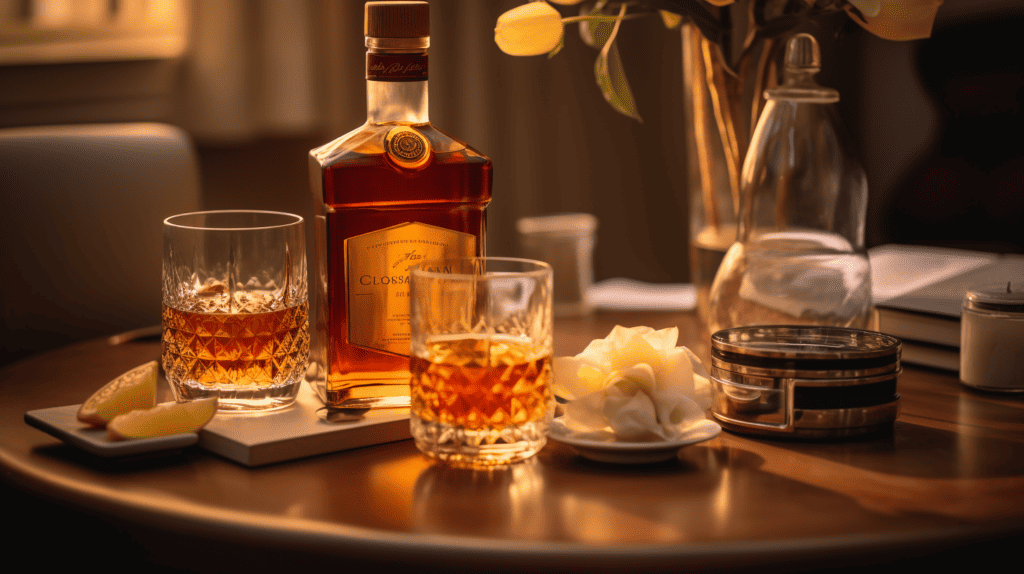
Cognac is a luxurious and sophisticated spirit that is best enjoyed by sipping slowly and savouring the complex flavours. When tasting cognac, it is important to pay attention to the different notes and aromas that make up the flavour profile. In this section, we will explore how to taste cognac and understand its flavours.
Understanding Cognac Flavours
Cognac is made from grapes and aged in oak barrels, which gives it a unique flavour profile with a range of complex flavours. Some of the most common flavours found in cognac include:
- Fruit notes like apricot, peach, pear, and apple
- Floral notes like honey and ginger
- Rich notes like vanilla, caramel, and dark chocolate
- Spices like cinnamon, black pepper, and raisins
When tasting cognac, it is important to pay attention to the different notes and how they interact with each other. The aroma of the cognac is also an important factor in understanding its flavour profile.
How to Taste Cognac
To taste cognac properly, follow these steps:
- Pour a small amount of cognac into a tulip-shaped glass.
- Hold the glass by the stem and swirl the cognac around to release its aromas.
- Take a small sniff of the cognac to get a sense of its aroma.
- Take a small sip of the cognac and let it sit on your tongue for a few seconds.
- Swirl the cognac around in your mouth to fully experience its flavours.
- Swallow the cognac and pay attention to the aftertaste.
When tasting cognac, it is important to take your time and savour each sip. Cognac is a smooth and fruity spirit that is best enjoyed slowly and in moderation.
In conclusion, tasting cognac is a luxurious experience that should be savoured and enjoyed. By understanding its flavours and aromas, you can fully appreciate the complex and sophisticated nature of this spirit.
Drinking Cognac
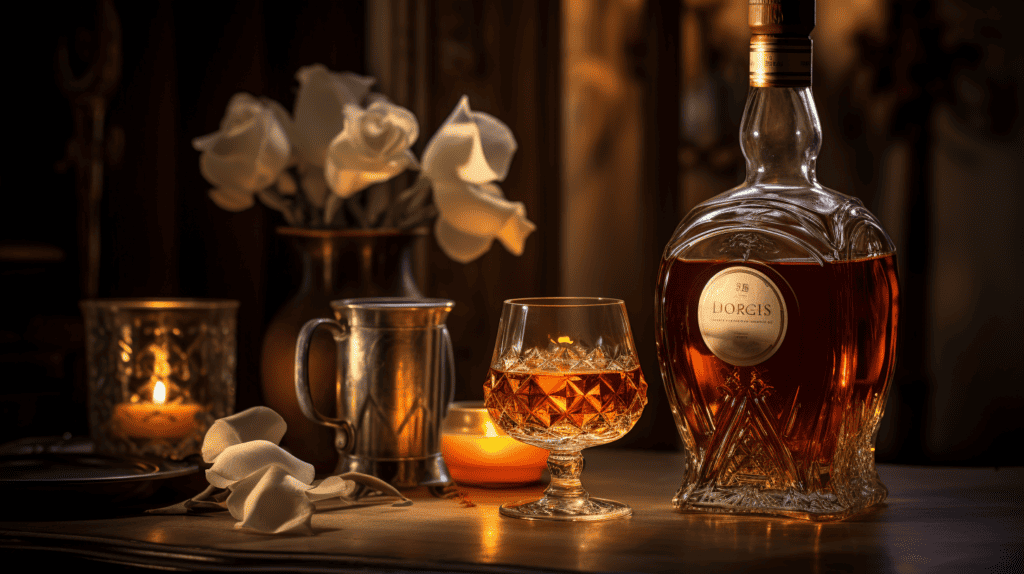
Cognac is a luxurious and sophisticated spirit that can be enjoyed in a variety of ways. Whether you prefer it neat or mixed in a cocktail, there are many ways to savour this fine spirit.
Cognac Neat

Drinking cognac neat is a popular way to enjoy the rich and complex flavours of the spirit. To fully appreciate the aroma and taste of cognac, it is best to serve it in a tulip-shaped glass. This will help to concentrate the aromas and allow you to fully appreciate the nuances of the spirit.
When drinking cognac neat, it is important to take your time and savour each sip. Start by taking a small sip and allowing the spirit to rest on your tongue for a few seconds before swallowing. This will allow you to fully appreciate the flavours and aromas of the cognac.
Cognac in Cocktails
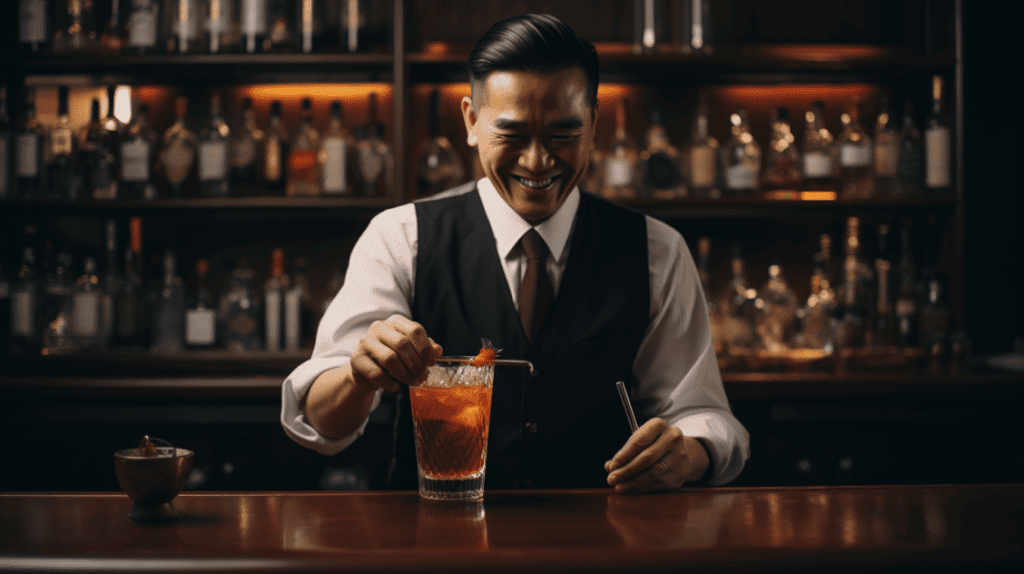
Cognac is also a versatile spirit that can be used in a variety of cocktails. One classic cognac cocktail is the Sidecar, which is made with cognac, Cointreau, and lemon juice. This cocktail is a great way to enjoy the rich and complex flavours of cognac in a refreshing and citrusy drink.
Another popular way to enjoy cognac in a cocktail is to use it as a substitute for whiskey in a classic cocktail like an Old Fashioned. This will give the cocktail a slightly different flavour profile and allow you to experiment with different combinations of ingredients.
When using cognac in cocktails, it is important to choose a high-quality cognac that will complement the other ingredients in the cocktail. Look for cognacs that are smooth and well-balanced, with a rich and complex flavour profile that will add depth and complexity to your cocktails.
Overall, whether you prefer your cognac neat or mixed in a cocktail, there are many ways to enjoy this luxurious and sophisticated spirit. So why not try something new and experiment with different ways to savour the rich and complex flavours of cognac?
Top Cognac Brands
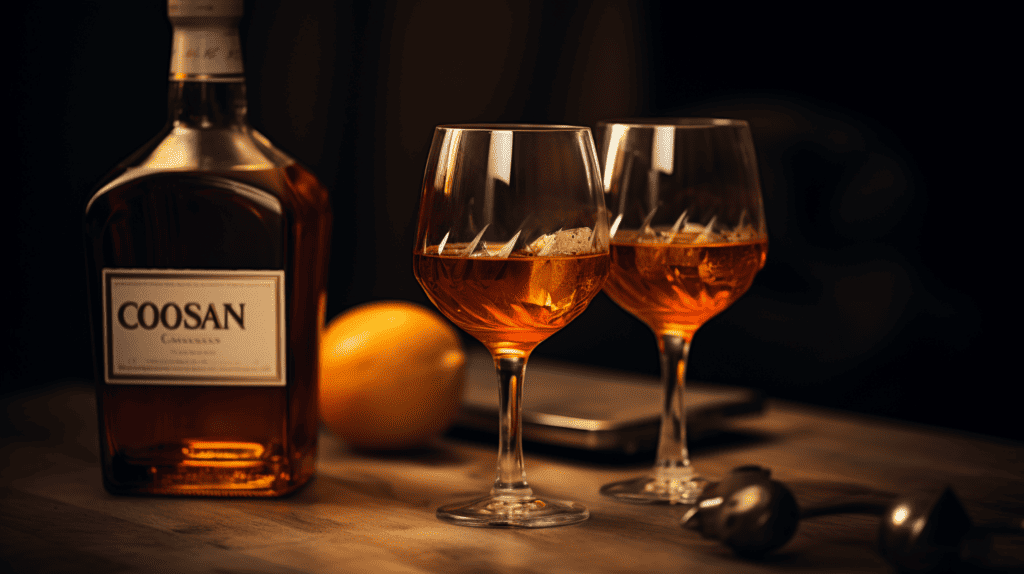
If you’re a cognac enthusiast or just starting to explore the world of cognacs, you might be wondering which brands are worth trying. In this section, we’ll introduce you to some of the top cognac brands that have gained a reputation for their quality, taste, and history.
Hennessy
Hennessy is undoubtedly the most recognizable cognac brand in the world. Founded in 1765, it has been producing cognacs for over 250 years and has become a symbol of luxury and sophistication.
Hennessy’s VS, VSOP, and XO are some of the most popular and widely available cognacs on the market. The VS is a great entry-level cognac, while the VSOP and XO are more complex and sophisticated.
Courvoisier
Courvoisier is another well-known cognac brand that has been around since 1809. It has a rich history and has been enjoyed by Napoleon Bonaparte himself. Courvoisier’s VS, VSOP, and XO are all excellent choices, with the VS being a great value for money option.
Rémy Martin
Rémy Martin is one of the oldest cognac houses, dating back to 1724. It is known for its smooth and elegant cognacs, which are aged in Limousin oak barrels. The VSOP and XO are some of the most popular choices, with the XO being particularly impressive.
Martell
Martell is one of the most prestigious cognac brands, with a history dating back to 1715. It is known for its smooth and balanced cognacs, which are aged in fine-grained oak barrels. Martell’s VS, VSOP, and XO are all excellent choices, with the VSOP being a great value for money option.
Hine
Hine is a lesser-known cognac brand that has been producing cognacs since 1763. It is known for its delicate and floral cognacs, which are aged in oak barrels for a minimum of six years. Hine’s Rare VSOP and Antique XO are both excellent choices.
Pierre Ferrand
Pierre Ferrand is a boutique cognac house that has been producing cognacs since 1989. It is known for its artisanal approach and attention to detail. Pierre Ferrand’s Reserve, Selection des Anges, and Ancestrale are all excellent choices, with the Selection des Anges being particularly impressive.
Frapin
Frapin is a family-owned cognac house that has been producing cognacs since 1270. It is known for its rich and complex cognacs, which are aged in oak barrels for a minimum of 20 years. Frapin’s Château Fontpinot XO is particularly impressive and has won numerous awards.
Camus
Camus is a cognac house that has been producing cognacs since 1863. It is known for its smooth and elegant cognacs, which are aged in oak barrels for a minimum of two years. Camus’s VSOP and XO are both excellent choices, with the XO being particularly impressive.
Jean-Luc Pasquet
Jean-Luc Pasquet is a small, artisanal cognac producer that has been producing cognacs since 1995. It is known for its high-quality, organic cognacs, which are aged in oak barrels for a minimum of six years. Jean-Luc Pasquet’s L’Organic and La Vie en Rose are both excellent choices.
Meukow
Meukow is a cognac house that has been producing cognacs since 1862. It is known for its rich and fruity cognacs, which are aged in oak barrels for a minimum of three years. Meukow’s VSOP and XO are both excellent choices, with the XO being particularly impressive.
These are just a few of the top cognac brands that are worth trying. Each brand has its own unique history, style, and taste, so it’s worth exploring a few to find your favourite. Whether you’re looking for a classic VS or a sophisticated XO, there’s a cognac out there for everyone.
Cognac and Oak
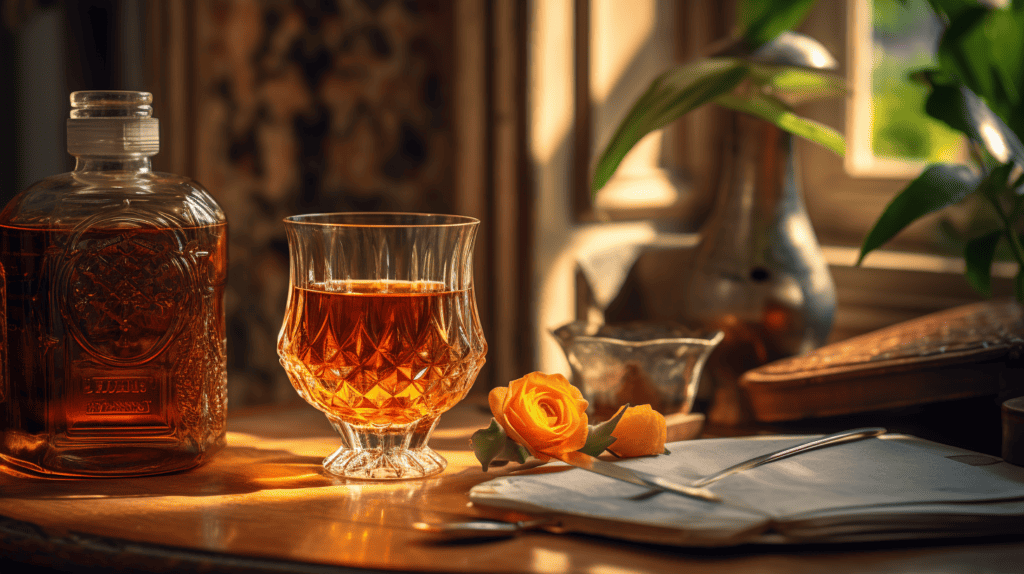
When it comes to cognac production, oak plays a crucial role in the maturation process. The type of oak used in the barrels can have a significant impact on the final flavour and aroma of the cognac. In this section, we will take a closer look at the role of oak in cognac production.
French Oak in Cognac Production
French oak is the most commonly used type of oak in cognac production. It is known for its fine grain, which allows for a slow and steady release of tannins and other flavour compounds. French oak also imparts a distinct vanilla and spice flavour to the cognac.
Limousin Oak Barrels
Within France, the Limousin forest is the most popular source of oak for cognac barrels. Limousin oak is prized for its tight grain and high tannin content, which results in a more complex and structured cognac. Limousin oak barrels are also known for their ability to impart a subtle nutty and caramel flavour to the cognac.
When it comes to cognac production, the oak barrels are often reused multiple times. This allows for the cognac to take on additional flavours and aromas from the oak.
However, after a certain point, the oak barrels will no longer impart enough flavour to the cognac, and they must be retired.
In conclusion, oak plays a crucial role in the production of cognac, and the type of oak used in the barrels can have a significant impact on the final flavour and aroma of the cognac.
French oak and Limousin oak are the most commonly used types of oak in cognac production, each with their unique characteristics and flavour profiles.
The Art of Cognac Blending
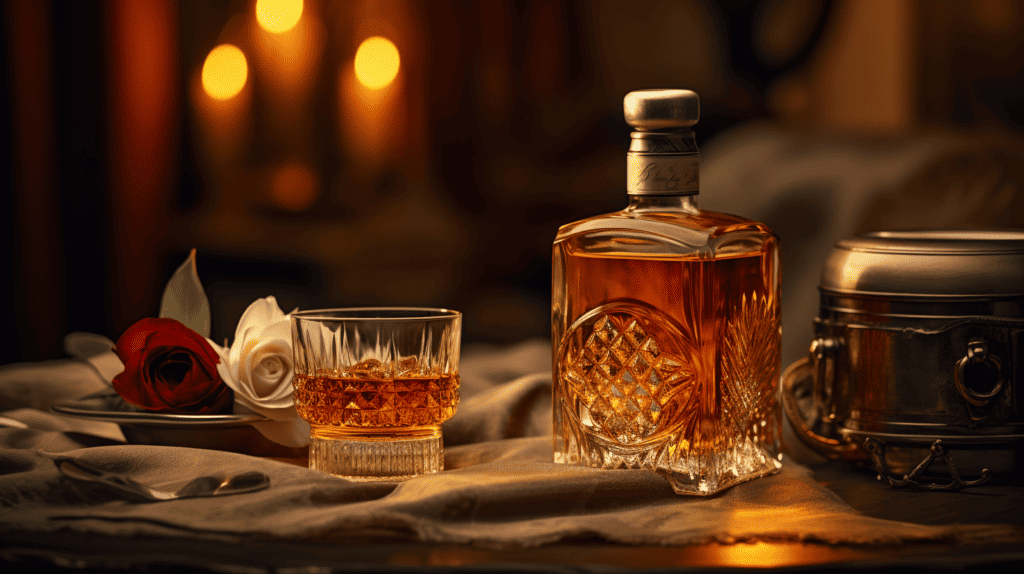
Cognac blending is an art that requires skill, knowledge, and experience. The process involves selecting and blending different eaux-de-vie to create a unique and balanced cognac. In this section, we will explore the role of the master blender and the importance of eaux-de-vie in cognac blending.
Master Blender
The master blender is the person responsible for creating the signature taste and aroma of a cognac. They are highly skilled and experienced professionals who have a deep understanding of the different eaux-de-vie and their characteristics.
They use their knowledge and expertise to blend the eaux-de-vie in a way that creates a harmonious and balanced cognac.
The master blender must have an excellent sense of taste and smell, as well as a deep understanding of the ageing process. They must be able to identify the different aromas and flavours of the eaux-de-vie and determine how they will interact with each other over time.
They also need to understand the impact of the oak barrels on the cognac’s flavour and aroma.
Eaux-de-Vie
Eaux-de-vie are the different types of brandies used to create cognac. They are made from the distillation of wine, and each one has its unique flavour and aroma. The eaux-de-vie used in cognac blending can range from young and fruity to old and complex.
The most common types of eaux-de-vie used in cognac blending are VS, VSOP, and XO. VS stands for Very Special and is the youngest and most affordable type of cognac.
VSOP stands for Very Superior Old Pale and is aged for a minimum of four years. XO stands for Extra Old and is aged for a minimum of six years.
Courvoisier XO Cognac and Martell XO Cognac are two examples of high-quality XO cognacs. Courvoisier XO Cognac has a rich and complex flavour with notes of dried fruit, chocolate, and oak. Martell XO Cognac has a smooth and velvety texture with hints of vanilla, honey, and spice.
Martell Cordon Bleu is another excellent cognac that is known for its rich and complex flavour profile.
In conclusion, cognac blending is a complex and intricate process that requires skill, knowledge, and experience. The master blender plays a crucial role in creating the signature taste and aroma of a cognac, while the eaux-de-vie provide the foundation for the final product.
Whether you prefer a young and fruity VS cognac or an old and complex XO cognac, there is a cognac out there for everyone to enjoy.
Cognac’s Unique Characteristics
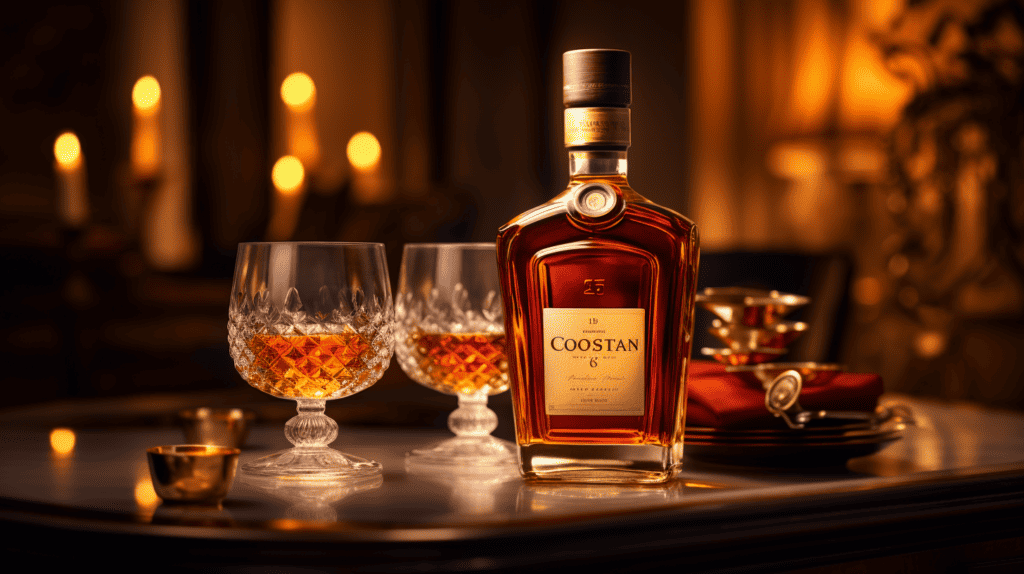
Cognac is a luxurious spirit that has a unique set of characteristics that set it apart from other types of brandy. Here are some of the unique characteristics that make cognac so special:
Flavors
Cognac has a complex and nuanced flavor profile that is both delicate and woody. It is made from white grapes that are grown in the Cognac region of France and has a distinct taste that is influenced by the terroir of the region. The flavor of cognac is often described as having notes of vanilla, caramel, and tobacco.
Age Designations
Cognac is aged in oak barrels for a minimum of two years, but many cognacs are aged for much longer. The age of a cognac is indicated by its designation, which can be VS (very special), VSOP (very superior old pale), or XO (extra old).
Distillation
Cognac is made by distilling wine in copper pot stills. The distillation process is carried out twice, which helps to concentrate the flavors and aromas of the wine. The resulting spirit is then aged in oak barrels to further develop its character.
Grapes
Cognac is made from a blend of different grape varieties, including Folle Blanche and Colombard. These grapes are known for their high acidity and low sugar content, which makes them ideal for distillation.
Terroir
The terroir of the Cognac region is an important factor in the production of cognac. The region has a unique combination of soil, climate, and topography that gives the grapes grown there a distinct character. The region is also home to a variety of flowers and herbs that contribute to the flavor of the cognac.
ABV
Cognac has an alcohol by volume (ABV) of between 40% and 60%. The high ABV helps to preserve the spirit and gives it a long shelf life.
Crus
Cognac is made from grapes grown in six different crus, or growing regions, within the Cognac region. Each cru has its own unique character and flavor profile, which contributes to the overall complexity of the cognac.
In summary, cognac is a luxurious spirit with a unique set of characteristics that make it stand out from other types of brandy. Its complex flavor profile, age designations, distillation process, grape varieties, terroir, ABV, and crus all contribute to its nuanced and sophisticated character.
Frequently Asked Questions
What are the best Cognac brands with prices under £50?
Some of the best Cognac brands with prices under £50 include Martell VS, Courvoisier VS, and Rémy Martin VSOP. These brands offer a great balance of quality and affordability, making them perfect for those who want to try out Cognac without breaking the bank.
Which XO Cognac brands are worth trying?
XO Cognac is a premium category of Cognac that is aged for at least 10 years. Some of the best XO Cognac brands worth trying include Hennessy XO, Martell XO, and Rémy Martin XO. These brands offer a rich and complex flavour profile that is perfect for sipping and savouring.
What are the best Cognac brands for cocktails?
Cognac can add a rich and complex flavour to cocktails, making it a popular choice among mixologists. Some of the best Cognac brands for cocktails include Hennessy VS, Courvoisier VSOP, and Martell Cordon Bleu. These brands offer a great balance of flavour and affordability, making them perfect for mixing into your favourite cocktails.
What are the most popular Cognac brands?
The most popular Cognac brands include Hennessy, Rémy Martin, Courvoisier, and Martell. These brands have a long history of producing high-quality Cognac and are widely recognized for their rich and complex flavour profiles.
What are some good expensive Cognac options?
If you are looking to splurge on a high-quality Cognac, some good options include Hennessy Paradis, Louis XIII, and Martell Cordon Bleu. These brands offer a rich and complex flavour profile that is perfect for sipping and savouring, making them a great choice for special occasions or as a gift for a Cognac aficionado.




